The Scottish Fold cat is instantly recognizable for its endearing, owl-like appearance, primarily due to its uniquely folded ears. These cats have captured the hearts of many, becoming beloved household pets. However, their increasing popularity has brought to light serious ethical concerns surrounding their health and the practice of breeding them. This article delves into the fascinating world of the Scottish Fold, exploring their history, characteristics, temperament, and the important health considerations that potential owners and cat enthusiasts should be aware of. We aim to provide a comprehensive overview of this captivating breed and encourage thoughtful consideration regarding their future.
Did you know?
Pop superstar Taylor Swift is famously fond of Scottish Fold cats, owning two named Detective Olivia Benson and Doctor Meredith Grey. She frequently shares photos and updates about her feline companions on social media, further boosting the breed’s popularity.
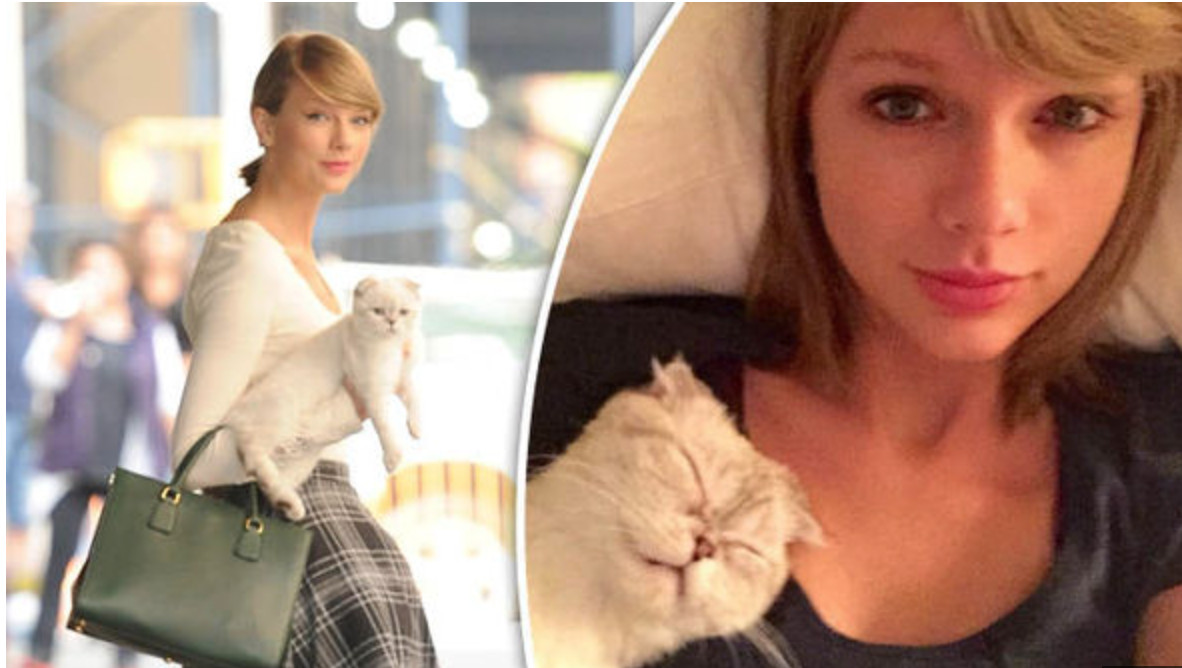 Taylor Swift's Scottish Fold Cats, Olivia Benson and Meredith Grey, known for their folded ears, a distinctive trait of scottish cats.
Taylor Swift's Scottish Fold Cats, Olivia Benson and Meredith Grey, known for their folded ears, a distinctive trait of scottish cats.
If you’re interested in learning more about Taylor Swift’s adorable Scottish Fold pets, you can find additional information HERE.
Quick Facts About Scottish Fold Cats
- Life Expectancy: Scottish Fold cats typically live between 12 and 14 years.
- Weight: They generally weigh between 6 and 13 pounds.
- Length: Their body length averages 10 to 12 inches (excluding the tail).
- Height: Scottish Folds stand approximately 8.5 to 10 inches tall.
- Cutest Cat?: While subjective, many believe the Scottish Fold cat holds the title for the world’s cutest cat breed! We encourage you to form your own opinion.
The History and Origin of the Scottish Fold Breed
The Scottish Fold breed’s story begins, unsurprisingly, in Scotland. Specifically, they were first discovered in 1961 in the Tayside region, on a farm near Coupar Angus. This makes them a relatively modern breed in the cat world.
A shepherd named William Ross noticed a white farm cat named Susie who stood out from all the others because of her unusual folded ears. Remarkably, every Scottish Fold cat alive today can trace its lineage back to this single, remarkable female cat! Intrigued by Susie’s unique appearance, when Ross learned she had kittens, he asked the farmers if he could have one. He acquired one of Susie’s kittens, a white female named Snooks, and embarked on establishing the breed.
Susie carried a spontaneous genetic mutation that resulted in the distinctive folded appearance of her ears. This mutation was visibly passed on to two of her kittens. While not all kittens in a litter would inherit the folded ears, they could still carry the gene.
In 1966, William Ross officially registered the Scottish Fold breed with the Governing Council of the Cat Fancy in the UK and began a formal breeding program. He collaborated with geneticist Pat Turner, and their research confirmed that the ear mutation was caused by a simple dominant gene. In the first three years of their breeding program, they produced an impressive 76 kittens, with 42 exhibiting folded ears and 34 with straight ears.
Sadly, Susie, the founding mother of the breed, was tragically killed by a car just three months after giving birth to her first and only litter. Despite her short life, Susie is revered by Scottish Fold enthusiasts as the origin of this captivating breed, the ancestor of all Scottish Fold cats.
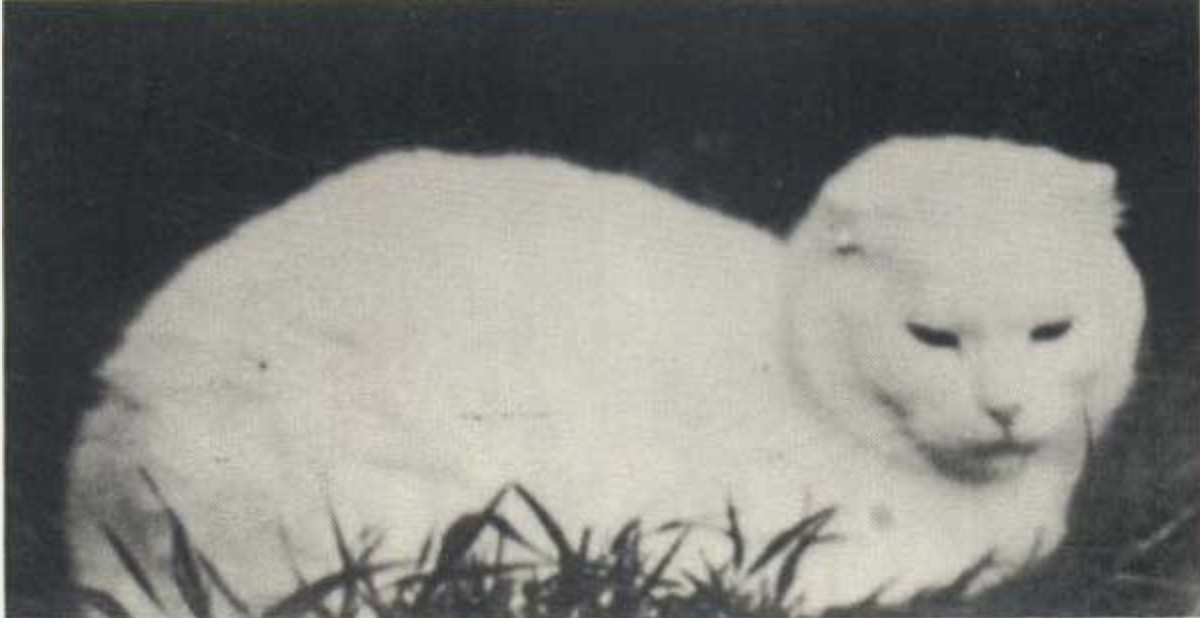 Susie, the original Scottish Fold cat, showcasing her unique folded ears, the hallmark of scottish cat breeds.
Susie, the original Scottish Fold cat, showcasing her unique folded ears, the hallmark of scottish cat breeds.
Susie, the original Scottish fold cat.
Over the years, there has been speculation about a possible Oriental ancestry for these unique cats. Historical records from a 1796 issue of the Universal Magazine of Knowledge and Pleasure describe folded-ear cats in China.
However, whether the Scottish Fold is related to these ancient Chinese cats or if Susie’s mutation was a completely new, spontaneous event remains unknown. Therefore, Susie is generally recognized as the definitive starting point of the Scottish Fold breed as we know it today.
Did you know?
For a brief period, Scottish Fold cats were initially called “lop-eared cats,” before their name was officially changed to the now familiar “Scottish Fold.”
Identifying a Scottish Fold Cat: Key Characteristics
The Scottish Fold is considered a relatively rare cat breed, originating from a genetic mutation in the 1960s. They are instantly recognizable by their rounded faces and bodies, and most notably, the distinctive folds in their ears, which contribute to their endearing, often described “owl-like” expression. Their coats come in a wide array of colors, from pure white to solid black and every shade in between, and can be either solid or patterned. The long-haired variant of the Scottish Fold is known as the Highland Fold.
Distinctive Ears
Did you know?
Scottish Fold kittens are actually born with straight ears. The characteristic fold begins to develop between 18 and 24 days of age, and even then, only if the kitten has inherited the specific gene. Typically, only about half of the kittens in a litter will inherit the gene and develop the signature folded ears.
The ear folds of a Scottish Fold can vary, categorized into three types: single, double, or triple fold. A single fold involves just the tip of the ear folding downwards, a double fold sees about half the ear folded, and a triple fold results in the entire ear lying flat against the head. In cat shows where the breed is recognized, a triple folded ear is generally considered the ideal “show quality” standard.
Despite their folded appearance, Scottish Fold cats retain full use of their ears for expression and communication. They can still swivel their ears to pinpoint sounds, flatten them back when annoyed, and perk them up with interest, especially at the sound of a treat bag rustling!
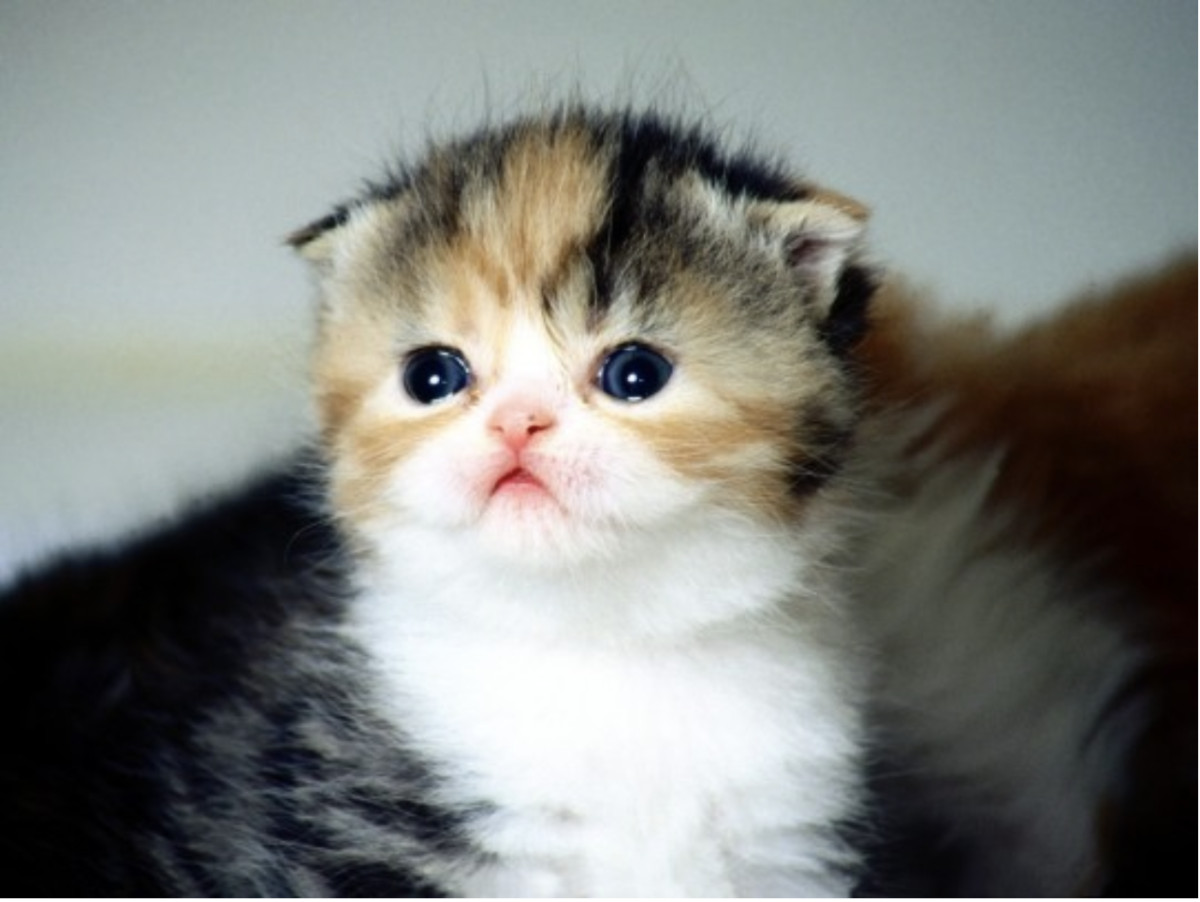 Close-up of a Scottish Fold cat's triple-folded ear, illustrating the desired ear type for show quality scottish cats.
Close-up of a Scottish Fold cat's triple-folded ear, illustrating the desired ear type for show quality scottish cats.
Rounded Body Shape
Scottish Folds are classified as medium-sized cats, but their defining physical trait is their roundedness. Almost every aspect of their body exhibits a rounded shape, particularly their head and face. Their eyes are large, round, and widely spaced, further enhancing their gentle expression. They have short necks and noses and often appear somewhat “padded” around the middle, which undoubtedly contributes to their irresistible cuddly appeal.
Coat Variations
Scottish Fold cats come in both short-haired and long-haired varieties. Even the short-haired Scottish Folds possess a remarkably dense and plush coat that feels full and almost stands away from the body. The long-haired Scottish Folds are known as Highland Folds and feature fuller, feathered fur, particularly on their tail, feet, ears, and around the collar, though the fur may be shorter around their face.
Due to the increased health risks associated with breeding two Scottish Folds together (both carrying the mutated gene), breeders have, for several generations, outcrossed them with British and American Shorthair cats. This has resulted in a wide spectrum of coat colors and patterns. However, in the United States, Scottish Folds exhibiting Siamese-type points or chocolate or lilac fur are not eligible for showing in competitions.
Are Scottish Fold Cats Hypoallergenic?
Unfortunately, Scottish Fold cats are not hypoallergenic. If you suffer from cat allergies or sensitivities, a Scottish Fold kitten, no matter how adorable, might trigger allergic reactions, causing symptoms like watery eyes and sneezing.
Scottish Fold vs. British Shorthair: Key Differences
While Scottish Fold and British Shorthair cats share some similarities in appearance, there are distinct differences between these two breeds.
Beyond the signature folded ears of the Scottish Fold, British Shorthairs tend to be larger and heavier in build. Of course, British Shorthairs lack the defining characteristic of Scottish Folds – those charming folded ears!
British Shorthairs also possess a dense, short coat that requires regular brushing, typically around once a week. Scottish Fold cats, with their varying coat lengths, may require more or less frequent brushing depending on whether they are short-haired or long-haired Highland Folds.
In terms of activity levels, neither breed is particularly energetic, preferring naps to vigorous play. However, Scottish Folds are generally considered to be more affectionate and people-oriented, while British Shorthairs often exhibit a more independent nature.
Temperament and Personality of the Scottish Fold
Scottish Fold cats are renowned for their exceptionally friendly and affectionate personalities towards humans. They thrive on attention and often develop close bonds with their families, frequently following their favorite people around the house. However, if left alone for extended periods, they can become bored and potentially exhibit destructive behaviors. Scottish Folds are known to be intelligent and have a definite sense of self, readily communicating their needs and feelings.
They are generally quiet and calm cats, unless they are seeking attention or are distressed. When they want something, they will typically express themselves with soft meows. While not as vocal as some other breeds, they are known for producing a wide range of vocalizations, from chirps to purrs. Scottish Folds are natural climbers and enjoy elevated vantage points. Despite their somewhat laid-back nature, they still require regular exercise and mental stimulation. Above all, they are playful cats who enjoy having fun!
A notable trait of Scottish Fold cats is their tendency to bond strongly with one particular person in the household. While they will generally accept affection from other family members, they often develop a primary attachment to a single individual, similar to the bond a dog might form with its owner.
Understanding Scottish Fold Cat Emotions
Scottish Fold cats, like many felines, express affection and contentment through kneading – gently pushing their paws into you with retracted claws.
Beyond this, reading their emotions is similar to understanding any cat’s body language. Half-closed eyes typically indicate contentment and relaxation. Wide-open eyes with dilated pupils can signal excitement or potential playfulness (or sometimes fear), and narrowed eyes often suggest displeasure or a desire to be left alone.
Unlike dogs, a wagging tail in a cat usually indicates agitation or unhappiness. An arched back is also a sign of defensiveness or fear. Learning to recognize these subtle cues in cat body language will greatly enhance your ability to understand and respond appropriately to your Scottish Fold cat’s emotional state.
Did you know?
Maru, a Scottish Fold cat from Japan, achieved a Guinness World Record for being the most viewed animal on YouTube, amassing an incredible 325,704,506 views!
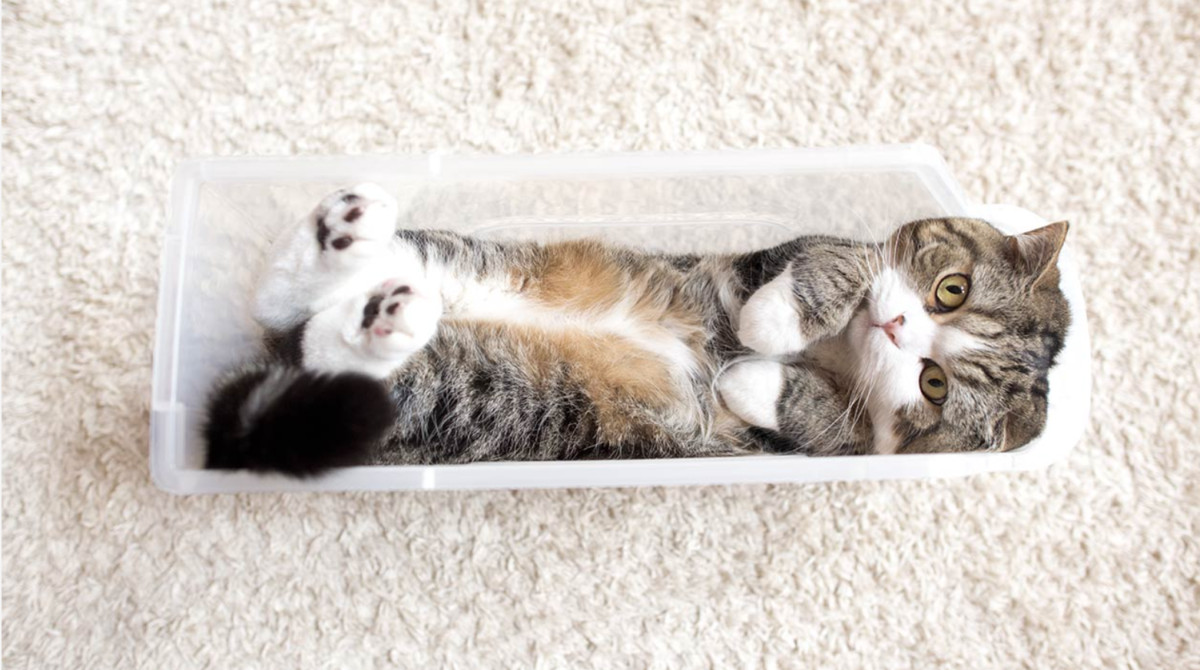 Maru the Scottish Fold cat, a YouTube sensation, demonstrating the breed's playful and endearing nature.
Maru the Scottish Fold cat, a YouTube sensation, demonstrating the breed's playful and endearing nature.
Common Habits of Scottish Fold Cats
Scottish Fold cats generally enjoy being outdoors and benefit from outdoor play and stimulating activities.
They are known for their somewhat stubborn nature. Loneliness is something they dislike intensely, and they can exhibit genuine signs of depression if they are frequently isolated or left alone for too long.
Scottish Folds are also famous for their quirky postures and sleeping positions. They are often seen contorting their bodies into unusual shapes and may sleep on their backs in a relaxed, almost human-like pose. Another characteristic habit is sitting upright in what is often called the “Buddha position,” with their legs extended and paws resting on their belly, as shown in the image below.
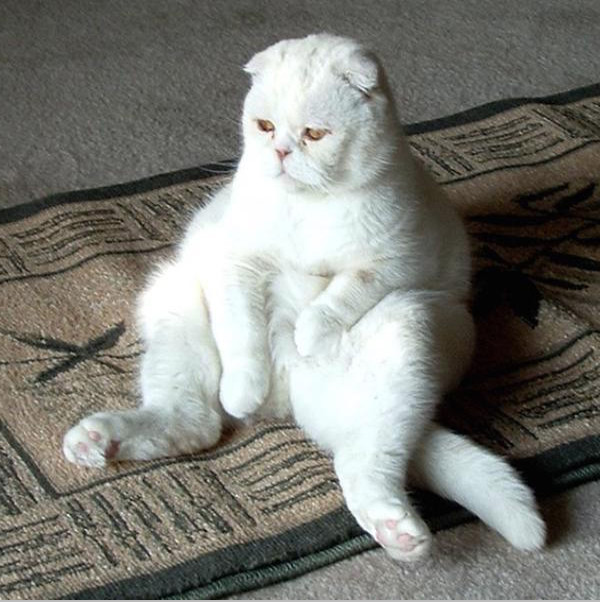 Scottish Fold cat sitting in the "Buddha position," a characteristic pose often seen in scottish cats.
Scottish Fold cat sitting in the "Buddha position," a characteristic pose often seen in scottish cats.
Grooming and Care for a Scottish Fold Cat
- Short-haired Scottish Folds: Require weekly grooming to keep their coat clean and healthy.
- Highland Folds (Long-haired): Need to be combed at least twice a week to prevent mats and tangles from forming in their longer fur.
- Nail Trimming: Regular nail trimming, typically weekly, is necessary, although the frequency may depend on whether the cat is primarily indoors or has outdoor access.
- Ear Cleaning: Due to their folded ears, Scottish Fold owners must check their cat’s ears weekly and clean them as needed to prevent wax buildup and potential infections.
- Dental Care: Many Scottish Fold owners brush their cat’s teeth regularly with vet-approved pet toothpaste to promote good oral hygiene and fresh breath.
- Early Habituation: It’s advisable to start nail trimming and teeth brushing routines early in kittenhood so your Scottish Fold becomes accustomed to these procedures. Introducing a toothbrush to an older cat unfamiliar with the process is likely to result in scratches!
Scottish Fold Cats’ Health and Nutritional Needs
Scottish Fold cats, with their charming folded ears, are predisposed to certain health issues directly related to the very gene mutation that gives them their unique appearance. The weakened cartilage in their ears, responsible for the folds, also affects cartilage throughout their body, particularly in their joints.
Therefore, a diet rich in protein and low in carbohydrates is crucial for Scottish Folds. This nutritional approach helps support joint health and manage their weight, as they can be prone to weight gain due to their tendency towards a less active lifestyle.
Digestive System Considerations
While Scottish Fold cats may look different from their wildcat ancestors, their digestive systems remain remarkably similar. They often have sensitive stomachs and can react negatively to high carbohydrate content in their diet. Their ideal diet should primarily consist of meat, cartilage, and bones, reflecting their natural carnivorous needs.
The Ethical Debate: Should Scottish Fold Breeding Be Banned?
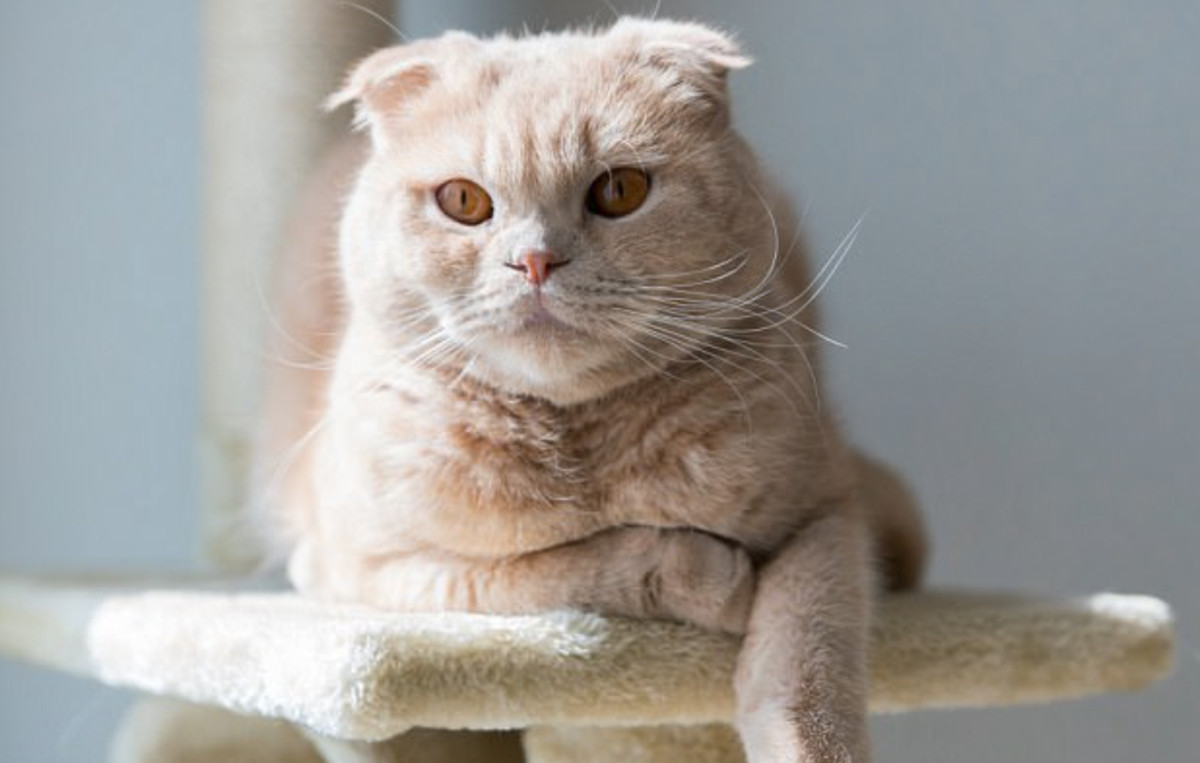 A sad-looking Scottish Fold cat, highlighting the breed's potential for suffering due to genetic health issues associated with scottish cat breeding.
A sad-looking Scottish Fold cat, highlighting the breed's potential for suffering due to genetic health issues associated with scottish cat breeding.
The genetic mutations that make Scottish Folds so undeniably cute also carry a significant risk of causing suffering, leading animal welfare advocates to call for a ban on breeding these cats.
Gudrun Ravetz, former president of the British Veterinary Association, has stated that “People are wanting to have these cats because of how popular they have become with celebrities and on social media, but unfortunately it is another example of us prioritizing how a pet looks rather than their quality of life.”
She further explains, “The cartilage is deformed and it is not supporting the ears, which also leads to problems with other parts of the cat’s body. These genetic mutations, which all the Scottish fold cats will have, develop into lifelong incurable and painful diseases such as a type of arthritis,” specifically Osteochondrodysplasia.
The Governing Council of the Cat Fancy, the UK’s pedigree cat registry, ceased registering Scottish Folds in the early 1970s due to concerns about ear disorders and potential hearing problems. While their popularity waned in the UK after this decision, they continued to gain popularity in the United States and elsewhere.
Proponents of continued Scottish Fold breeding argue that responsible breeders who avoid mating two Scottish Folds together, instead crossing them with breeds like American or British Shorthairs, can minimize the risk of congenital health problems.
However, Ms. Ravetz from the British Veterinary Association refutes this claim, stating, “All cats with this folded ear appearance will have the genetic mutation. The rate at which they get the disease and the severity of the disease can be different, but they will all to some degree have an incurable, painful, and lifelong disease. We should not be breeding pets that can have these problems.”
Currently, there is no breeding ban on Scottish Fold cats or general restrictions on cat breeding in the UK, but the Scottish government has indicated it is considering introducing a ban on the breed. The veterinary industry journal Vet Record has also announced a review of its policy regarding the use of Scottish Fold cats in their advertisements.
Get Creative: Make an Origami Cat!
If you’re feeling creative, why not try your hand at making this origami cat? You can even fold down the ears to resemble a Scottish Fold! 🙂
